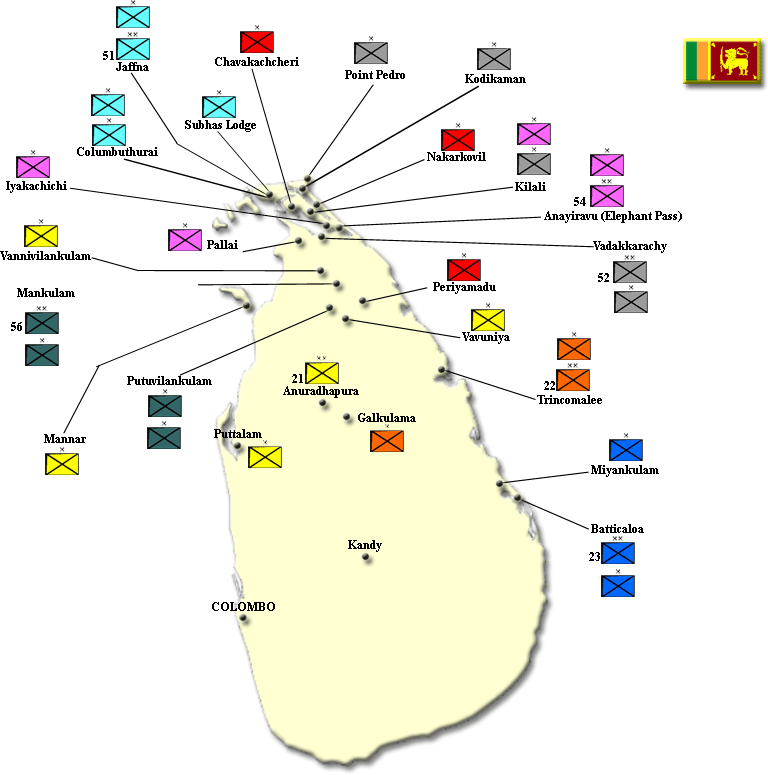China has made quick strategic moves to encircle India while advancing its growing global interests.
by Arun Kumar Singh
( December 16, 2016, New Delhi, Sri Lanka Guardian)
Whilst most Indians have been rightly focused on India’s attempt to leapfrog into the digital and cashless economy after Prime Minister Narendra Modi’s surprise announcement of November 8 about demonetising Rs 500 and Rs 1,000 notes, some equally important news, which may have dangerous strategic implications for India, have been sidelined. China has made quick strategic moves to encircle India while advancing its growing global interests.
The Chinese Navy has been deployed in prolonged anti-piracy operations off Somalia since 2008. It has added conventional and nuclear submarines for such deployments though submarines have no role to play in anti-piracy operations. China has built and militarized seven artificial islands in the disputed South China Sea. It has improved its relations with the Philippines’ new President Rodrigo Duterte with a $20 billion aid package.
Early this year, China acquired its first foreign naval base facility in Djibouti, which also hosts US and Japan maritime surveillance aircraft. Now that Somali piracy has been largely neutralized, China has made various moves to ensure that its Navy has a permanent presence in the Indian Ocean region by getting base facilities for warships and aircraft. This will protect its sea lanes of commerce and also its newly-proclaimed Maritime Silk Route, which is a part of the well-known “one belt one road” connecting China to Europe by reviving the fabled Silk Route of medieval times. Let’s examine some of these Chinese moves, which are now becoming a reality.
The first of these relates to the Chinese-built Hambantota port in Sri Lanka, where China is now apparently going to control 80 percent of the facility. It will have management control of this new strategically located deep-water port in India’s immediate neighborhood.
Wily and farsighted China has also built a massive international airport just 18 km from Hambantota port, named as Mattala Rajapaksa International Airport. With Sri Lanka in no position to repay China for these infrastructure projects, and also others like the world-class highway linking Colombo to Galle port, there are some media reports about China taking Hambantota port and the Mattala airport on a 99-year lease. This will pave way for a Chinese naval base in our neighborhood, thus converting Sri Lanka into a long-term Chinese ally.
In the meantime, US President-elect Donald Trump spoke to the Taiwanese President. This indicates that China and the US may be heading for a possible confrontation. To emphasize this point, last week, a US Navy long-range maritime patrol and anti-submarine aircraft P-8A, operated from China-built Mattala airport. Two rival superpowers in India’s backyard is not good news for India.
Next is the publicly announced forthcoming induction of two Chinese-built conventional submarines by the Bangladesh Navy in January 2017. It may be well known that Bangladesh is now planning to commercially exploit its newly-acquired expanded exclusive economic zone in the Bay of Bengal. China — which has already sold warships to Bangladesh — has now made a long-term presence in Bangladesh possible, by not only selling submarines at subsidized rates but also providing $20 billion loan and signing deals worth $13.6 billion during President Xi’s two-day visit on October 14.
To solve its “Malacca dilemma”, China provided soft loans of $13.75 billion to Malaysia for building its East Coast rail line and also to sell four Navy warships at subsidized rates. The total package is about $34 billion.
Similarly, Thailand, which has Chinese-built warships in its Navy, has embraced China by placing orders for three Chinese conventional submarines in July 2016. China is apparently ready to finance and build the Kra Isthmus Canal (across Thailand), which will save hundreds of miles of sea passage for warships, submarines, and merchant ships, by linking the Gulf of Thailand to the Andaman Sea.
Finally, we come to China’s all-weather friend — Pakistan. It is the beneficiary of $51 billion for the China-Pakistan economic corridor, linking China’s restive Xinjiang province through disputed Pakistan-occupied Kashmir to China-financed, built and managed port of Gwadar. Recently, Pakistan announced that the Pakistan and Chinese Navies would jointly patrol the waters off Gwadar port to provide seaward security to this port, which last fortnight received the first Chinese merchant ship as part of CPEC.
Another media report mentions that the Pakistan Navy has created a special task force to provide seaward security to Gwadar port. Yet another recent media report says that Gwadar International Airport, financed and built by China, is ready to operate fully loaded A-380 Airbus aircraft, which are the largest aircraft flying today.
The Chinese Navy is already in the IOR, and its warships and submarines will soon be based at Chinese-built ports literally in our backyard, while Chinese warplanes will operate from Chinese-built airports which are next to Chinese-built seaports.
All this while India, its Parliament, and people are in the throes of a well-meaning digital revolution to become a cashless society. Hopefully, Mr Modi will take decisive steps to counter this latest seaborne threat to our national security.
Vice Admiral Arun Kumar Singh retired as Commander-in-Chief of the Navy’s Eastern Naval Command in 2007. A nuclear and missile specialist trained in the former Soviet Union, he was also DG Indian Coast Guard.







